What is email marketing?
Email Marketing is a digital marketing strategy that involves sending out emails to prospects and customers to communicate, engage and promote or attract business. In an email marketing ‘strategy’, a marketer sets marketing goals and follows a set of procedures to achieve those goals through email marketing.
You simply need to look at your existing inboxes and check to see if you have received promotional emails from any brands. These emails are part of brands’ email marketing strategies.
You may think email marketing is an old and dying form of marketing but this is far from the truth. Even with new channels such as video, social media and SEO being easily available to marketers, email marketing holds its ground as one of the best digital marketing strategies today.

Before we discuss why email marketing strategies are important and how you can implement one, let’s go over a brief history and evolution of email marketing over the decades.
A Brief History of Email Marketing
In 1971 Ray Tomlinson sent the first ever email and opened the gates for a fast, efficient and cost effective method to send mail. It was not long after that Gary Thuerk, a marketing manager, sent out the first mass email to 400 users promoting his company’s machines in 1978. He has since been considered the ‘father of spam’.
Although not a very large mailing list compared to today’s standards, Thuerk’s mass emailing resulted in sales worth $13 million for his company. Consequently, the ROI and benefits of email marketing quickly became apparent and email became an effective channel for direct marketing.
When the internet was introduced in 1991, Hotmail became the first ever free web based email service for the public. This provided marketers around the world with a channel for mass communication and they could reach customers in a new and exciting way.
Before this, business to customer (B2C) direct marketing relied on slow, expensive and time consuming methods like telephone marketing and postal mail services. Even though email was not that common among the general public at the time, once more and more marketers started sending out mass unsolicited emails, ‘spamming’ became a nuisance and restrictions were put in place.
Close to the end of the decade, governments around the world including in the UK, US and Europe introduced laws like the Can-Spam Act and The Data Protection Act to set regulations on email marketing and allow users to opt out of commercial mailing lists. By the mid 2000s, rules were introduced to prevent spamming by verifying the sender’s IP address to provide email validation.
Later, the introduction of smart phones with email capabilities further broadened the email marketing landscape. Users could now access emails in the palm of their hands and marketers started becoming creative with their emails in order to accommodate the new mobile users. Soon after, social media became popular and businesses and users started using social media platforms to connect and interact with one another.
This had a slight effect on email marketing because users now had higher expectations. Email marketing was still a lucrative and an effective way of digital marketing so marketers adapted to the higher expectations of users. Instead of emailing traditional generic and static emails, marketers started to personalize emails and cater to the specific needs of customers.
Email marketing has since advanced from a simple mass marketing strategy to a highly targeted and personalized marketing strategy for brand development. It has been around for a long time and will continue to do so.
Today, email marketing is more sophisticated and lucrative than ever. Let’s discuss the importance of a solid email marketing strategy and why you need one for your brand or business.
Why Having a Solid Email Marketing Strategy Is Important
If your brand’s digital marketing strategy does not incorporate email marketing then you are missing out on a cost effective way to communicate with prospects and customers. A solid and effective email marketing strategy is a great way to convert your prospects into customers and one-time customers into devoted repeat customers.
Following are some reasons you should invest in a solid email marketing strategy.
Mobile Access
Mobile devices like smart phones have made it easier than ever for users to check emails anywhere they go. The number of smart phone users increases daily and internet access is becoming a basic human right. Most public spaces in cities have free wireless networks for the general public to use.
This growing development allows people constant access and they commonly check their emails while waiting in lines, waiting rooms and during commutes. This makes email marketing an effective way to reach people on the go.
Research suggests that over 50% of all emails are opened on mobile devices and there is reason to believe this number may be higher. Moving forward, this trend is only going to grow faster as more and more people around the world gain access to the internet and mobile devices. This has been the case since the past decade and there is no reason why it will not continue.
If your brand is not currently involved in email or other online marketing strategies then you are missing out on great opportunities!
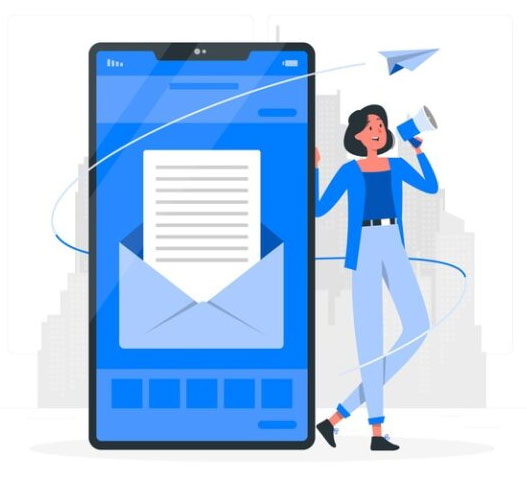
Effectiveness
The effectiveness of email marketing strategies has been leading digital marketing for decades now. They were ranked as the most effective digital marketing strategy by research conducted in 2018. The simple reason for this is possibly because people trust and use email more than other media channels.
Regardless of the reasons, email marketing strategies are highly effective and businesses, large and small, keep coming back to email even with so many new channels like social media, SEO, content and affiliate marketing available today.
The end goal of any digital marketing campaign is conversion and email marketing strategies are having a great run since Gary Thuerk’s days.
Cost Effectiveness
Email marketing is highly cost effective because it allows your brand to reach a wide audience and costs next to nothing per email. This is optimal for smaller businesses that cannot necessarily afford expensive marketing strategies like TV commercials, celebrity endorsements and other sponsored or paid promotions.
Compared to other explosive marketing channels such as social media and television, the ROI provided by email marketing is very high. According to research conducted in 2018, email marketing’s ROI is almost $40 for every dollar spent. This gives email marketing a significant advantage over other marketing channels, especially since the barrier to entry is so low.
If we compare this to the cost and time required for traditional post or print advertising, it becomes abundantly clear why email marketing is a better investment for similar type of marketing. Emails will create a similar response from prospects and customers as post or print advertising, and cost less time and resources.
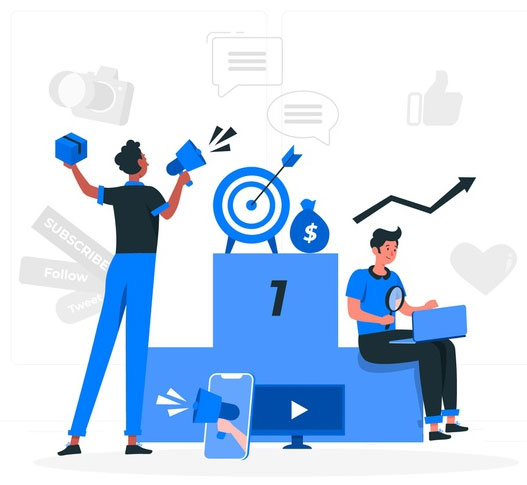
Email Lists Last Forever
This is also a way email marketing is cost effective because you can keep your email list forever, securing any investments you made on subscribers or leads toward developing your list. Unlike social media platforms where you can lose your subscription base if for any reason they decide to ban your account or ban your subscriber’s accounts, or hackers decide to hack these accounts.
With email marketing you can maintain your email list both, physically and digitally, in case of any unfortunate events and no one can take it away from you.
Personalization
Personalization is a big trend that has taken over digital marketing strategies in recent years. In email marketing, personalization can be as basic as adding the prospect or customer’s name in the subject line of an email or as advanced as targeted and customized strategies to meet the receiver’s needs.
Personalization allows you to develop a more meaningful bond with your prospects and customers. It humanizes your brand and its perception in people, they start seeing your brand as one that cares more about its customers. This helps raise your brand’s awareness and create a better experience for audiences.
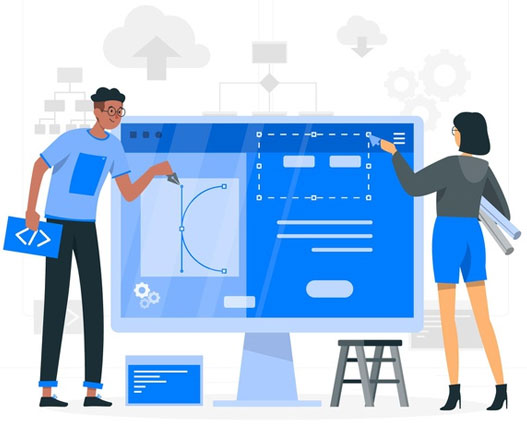
Because you are segmenting small groups of your mailing list when you personalize emails, you can add value to the contents of emails that cater to specific needs of those receivers. This creates a very different approach compared to social media marketing where you speak to your audience as a whole.
With personalization in emails, you can speak to individual prospects and customers by name and send them content privately to inboxes that resonates better with them because it is relevant to their specific requirements.
Personalization in email marketing is the best way to build trust and loyalty among audiences. You can speak directly to leads, prospects, existing customers and even previously lost customers in a way which ultimately boosts your brand’s image and gives you a higher chance at conversions.
Measurability
Email marketing strategies are measurable unlike any other. There is no room left for guesswork when you target audiences with email marketing. You can accurately measure which receivers opened your email, how many of them engaged with which links and how many of them decided to unsubscribe to your emails.
You can use email analytics that give you clear metrics on email open rates, what type of device was used to open the emails, bounce rates, click through rates and unsubscribe rates.
This gives an instant and very detailed feedback to brands about what works and what does not. It allows you to get a wider view of what needs adjustment and how you can improve on the effectiveness of your email marketing campaign.
A lot of the software used for email marketing will also allow you to conduct split testing, which is known as A/B testing. You can directly test audiences with split content or approaches to see which strategy is more effective and efficient for your campaigns. This will also help you gauge the direction of your entire digital marketing campaign.
How to Create a Successful Email Marketing Strategy
With so many reasons mentioned here, it is easy to see why creating an email marketing strategy is important for your brand. But simply creating one is not the best practice, you need to create one that is successful and effective to properly benefit from it.
Let’s look at how you can create a successful email marketing strategy for your brand.
Set Goals
Before starting off with an email marketing strategy, it is important to set goals. This will allow you to measure the success of your campaigns and understand whether they are working effectively or not. You can set the following basic goals:
- Maximum ROI
- Improved quality engagements
- Increased loyalty
- Improved relationships with customers
You can add any other goals to these that you want your brand to achieve with your email marketing strategy.
Know Your Customer
Knowing your customer is one of the most important things you can do to effectively use any marketing strategy. It will help you better target your audiences and know how to deal with them. You can collect data on existing customers that outlines what they like, what they dislike, what challenges they face, what is more valuable to them and how they think.
This data will help create ideal buyer personas. You can then use these buyer personas to better target your audiences, bring solutions to their problems and promote products that benefit them. You will even have the opportunity to introduce products or services they did not even know they needed or were available.
Build an Email List With Permissions
People today are constantly bombarded with unsolicited advertisements everywhere they go through billboards, flyers, TV commercials, online ads and much more. The last thing they want is more unsolicited content in the form of emails. This is why it is important to have permission before you decide to email someone.
Email marketing is not new to users and they understand the reasons for it, but getting them to opt in for emails requires incentive. This can be achieved by a call to action (CTA) that offers them something of value like:
- Free content
- Discounts
- eBooks
- Trial periods or samples
- Newsletter subscriptions
- Updates on new or existing products and services
You can use any of these or a million other things to create an incentive for users. It just needs to be something valuable that will attract them to give you their email address. If you want to create a unique incentive, then make sure it is:
- Easy to consume
- Useful
- Relevant
- Instantly available
The important thing is that you state a clear purpose for why you want their email address and how it can benefit them.
Generic requests for vague returns in CTAs is not the best practice to gain permissions for emails, instead mentioning specifics will go a long way and get you more subscribers who have an actual interest in what you are offering. Doing this will help you establish credibility and the user will know exactly what they are getting in return.
Use an Autoresponder
An autoresponder can be a very helpful tool when you have a growing mailing list. Handling manual responses initially is easy to do but once the subscribers start to grow, it can become more and more difficult.
Your campaign will become more complex with a growing mailing list and using an autoresponder will help you manage it. An autoresponder can automatically send emails that you schedule in advance. This allows you to stay consistent with your emails.
Planning these emails prior to starting your campaigns will allow you to schedule responses much earlier and be sure that you are in contact with prospects when it is time to sell new products or services.
Time Your Emails
Just like with most things in life, timing is everything. Sending emails at the right time can benefit your brand immensely and sending them at the wrong time can cause you to lose subscribers. You want to be mindful of time zones if you are catering to an international audience.
No one wants to receive email notifications in the middle of the night. Similarly, sending emails at prime time and on weekends has shown to be very beneficial for brands. An easy reason for this could be because most people are open to engagement at these times and generally in a good mood.
Try to send emails when it suits your subscribers and not yourself, this will help you receive the best responses and engagement from them. You can even perform split or A/B testing to better understand which times show better results than others.
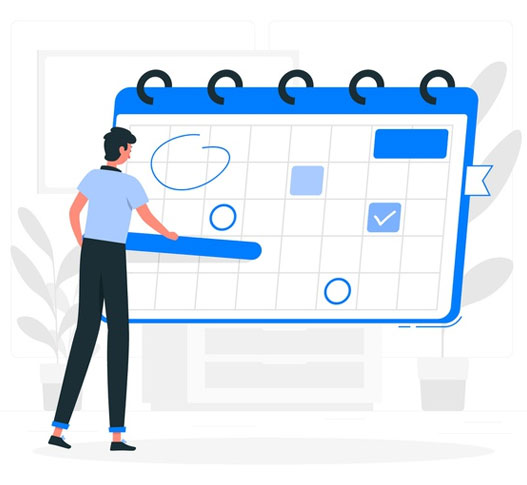
Manage Expectations
A good email marketing strategy does not begin with a rich email list or an autoresponder, it begins with managing expectations and delivering on time. Depending on the quality of your CTA, users will have certain expectations from what you deliver. Which is why the first email you send is crucial to your entire campaign.
Using an autoresponder will help you instantly send out the first email when someone subscribes to your mailing list. Your first email should introduce your brand in a concise and accurate manner and provide information about what you will use the subscriber’s email address for. You should let users know what to expect in the following emails and when to expect them.
You want to mange expectations in a way that suits both, you and the user. If you promised updates on something and you cannot follow through, you may be setting yourself up for disaster. Similarly, if you offered to email them bi-monthly and instead send them emails every other day, they will likely lose interest and unsubscribe from your mailing list.
Send emails according to the expectations you have set and deliver on time. With enough consistency and quality, users are more likely to convert when you send them emails that are selling a product or service.
Create Valuable Content
As always, content is king, and you want to deliver valuable content that interests subscribers and engages them to take action. When readers open your emails and like the content, they will most likely open and engage again when you email them next. They may even eagerly wait for more and be interested every time you send an email.
Conversely, if you send out content that is not liked by readers, they are more likely to not open future emails and may even unsubscribe. This is why you want consistently good content in your emails to keep audiences engaged.
The best practice is to make sure every email you send out has a clear purpose and you are not just sending emails out of habit. Maintain a schedule and regularly send out emails that are delivering value to readers every single time.
The more value you deliver, the more loyal your subscribers will be. In addition, valuable content will help establish your brand as a thought leader and expert in your field. This will promote your brand image and make for higher conversions.
Convert Prospects
Gaining subscribers for something you offer for free is easier than getting them to buy a product or service. Planning your sales pitch in advance will help you better convert prospects, you can gradually start pitching products every once in a while after they have received a few emails. Having a consistent gap of emails between these pitches will allow prospects to know when to expect a sales pitch.
Deciding when to pitch and how frequently to pitch can vary from business to business, and it is up to you to make that call but, it is important to keep your prospects in mind and think first about what they expect. It is always a good idea to assess the behavior of each prospect over time and act accordingly.
If they show interest in a certain offer, then continue sending those types of offers. You cannot send emails without understanding what works, because then it is highly likely that you will lose subscribers. Being cautious with your mailing list goes a long way and will give you better results over time from your email marketing strategies.
Avoid Spam Filters
This is one of the most common issues when emailing subscribers and if your emails are going in their spam folders then your campaign is as good as over. You can avoid this by always making sure that you have their permission as this is the most important step.
Other steps include but are not limited to:
- Using an IP address that was not used previously by someone that has sent spam in the past.
- Using a verified domain to send emails.
- Asking subscribers to add you to their address book.
- Including an easy opt out option for subscribers.
- Avoiding using sales words like ‘buy’, ‘discount’ or ‘sale’ too often in your emails.
If you follow these simple steps then there is a high chance your emails go directly to subscribers’ inboxes and not their spam folders.
Create Attractive Subject Lines
Using creative and attractive subject lines in your emails can greatly improve your open rates and engage readers better. A few key things to remember when creating subject lines are:
- Use Numbers
It is not entirely clear why but people seem to pay more attention to numbers. Including numbers in your subject lines will increase the chance of readers opening them. - Talk Like a Friend
Using a friendly and conversational tone that is not trying too hard can make opening emails very easy for readers. - Not Too Long
Try not to make long subject lines because reading them requires far more attention than users are willing to spare. - Entice Curiosity
Create subject lines that make readers curious to open emails and search for answers. Try not to make them so complex that the reader fails to understand what you are saying.
A subject line can create a better user experience from the start and give your emails an edge over countless other static and boring subject lines in most inboxes.
Understand Analytics
Earlier we discussed the measurability of email marketing campaigns and how analytics help us measure the engagement of prospects and customers. Every metric in analytics is important for different things but some are more important than others. There are three main metrics that give you immense feedback on how to improve your strategy. These are:
- Open Rate
This will tell you how many people are opening and reading your emails. This tells you how much readers enjoy and value your content. If you have a low open rate then your subscribers are not engaged and you should probably work toward more engaging and valuable content.
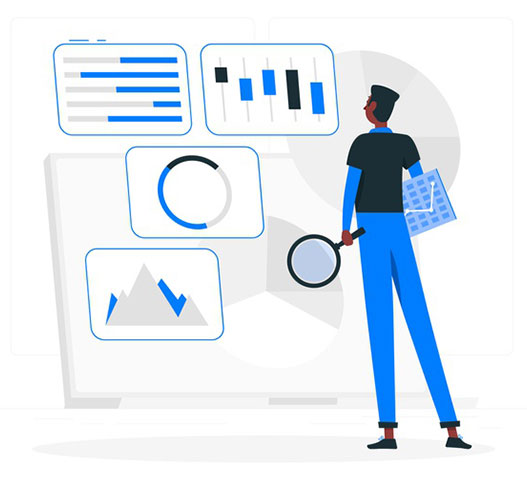
- Click Through Rate (CTR)
This tells you how many readers clicked on the links in your email. If your CTR is low then you are not targeting the right people. You might also want to reassess your pitch or CTA because it may not be capturing audiences effectively. - Unsubscribe Rate
This will tell you how many people decided to unsubscribe from your mailing list. If this is high then your strategy has some serious problems. Try to note when they unsubscribe to better understand where you are going wrong. Is it your initial email or a specific autoresponder email later on? You should quickly change whichever is the source of your problem.
If you can understand your analytics properly it will give your strategy the exact response it needs. It is always better to pay close attention and react quickly when you see certain problems in your analytics.
Segment Your List
Segmentation is simply breaking down your mailing list into smaller more targeted segments. These shortlists can be categorized as simply as:
- New subscribers lists
- Leads and prospects lists
- Existing customers lists
- Loyal customers lists
- Daily, weekly or monthly email lists
- Location lists
There can be plenty more categories depending on your business but these are some very basic categories. Segmentation will help you target segments with relevant content and communication.

Some customers may want to know about upcoming sales or discounts near them, while others may be interested in the latest products of a certain type. You can even make relevant pitches to those customers that showed interest in a certain product or service.
Another advantage of segmentation is that you can split test among groups and see how to get the best responses. This type of A/B testing can be very advantageous for learning how to best implement future email marketing strategies.
Reengagement Campaigns
Many mailing lists are large but large mailing lists are not necessarily efficient mailing lists. You want a mailing list that is engaged from top to bottom, if you have subscribers that are not interested in your emails then you are not engaging them the right way.
A good way to reengage inactive subscribers is to start reengagement campaigns. You can always split test and experiment with your reengagement campaigns and see what works best for you. The last call for subscribers that have been inactive for almost a year can be to launch emails that address the inactivity in a positive way and offer subscribers the option to opt out of the mailing list.
You want to tell them that they are important to you but you also understand if they want to opt out. This will show your loyalty to active customers, the transparency of your campaigns and improve your overall brand image. Obviously, no one wants to lose subscribers so it always better to add some value or incentive in your reengagement campaigns and opt-out emails before you make such an offer.
Conclusion
If you have not been using effective email marketing strategies for your brand, you may want to reassess your marketing strategies and start soon. Email marketing is consistently giving the best results compared to other digital marketing strategies and its ROI is astounding. Not only do you get more conversions but you raise brand awareness and your brand’s image among audiences.
Your initial email marketing strategy does not have to be the most advanced or complex for you to start benefiting from it, you can start simple and improve as you go. The important thing is to start using email marketing and grow your email list. Over time, it will help create loyal customers and subscribers that eventually convert and improve sales.
If you need help managing your email marketing strategy or email automation, you can visit our website for more details or contact us directly by calling (877) 347-3376.